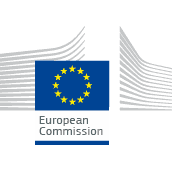
Optimised Airspace Users Operations
Deadline: Mar 16, 2016
CALL EXPIRED
CALL EXPIRED
Topic Description
Specific Challenge:The current ATM environment based on static flight plans is evolving towards a Trajectory Based environment in order to improve Airports and ATM Network performance. Airspace Users’ (AU) decision processes and resulting business priorities differ from AU to AU and from flight to flight within one AU. The trajectory development and management processes in ATM currently do not allow each individual user to incorporate specific aircraft/flight priorities into the requested trajectory, and respect any constraint in a way that best meets the business priorities. Similarly, OAT flight plans are not harmonised at European level and information is not disseminated into the Network, this induces a lack of awareness about military traffic intentions that can impact ATM Network performance (including safety), and a lack of flexibility in the definition of cross-borders exercises and limitations in terms of interoperability. Irregular operations impose unplanned/additional cost on airlines and have a huge impact on airlines’ annual costs and revenue. Today the ATM system allows little flexibility to Airspace Users (e.g. ATFM slot swapping process).Airspace Users’ full participation through their Flight Operations Centres (FOC/WOC) into ATM Collaborative Processes, including flights’ prioritisation with the full Used Driven Prioritisation process (UDPP), is essential to minimise impacts of deteriorated operations for all stakeholders including AUs. A better recovery process that should offer more flexibility to accommodate AUs’ changing business priorities and equity in the ATM system The collaborative planning and flight execution processes shall be performed at “level playing field”, i.e. performance of all actors is taken into. Rules must be implemented in case no collaborative planning is possible.
Scope:The project “Optimised Airspace Users Operations” aims at delivering the following SESAR Solutions:
-
Airspace Users’ Processes for Trajectory Definition: development of FOC related processes for the management of the Shared Business Trajectory to achieve the full integration of FOCs in the ATM Network processes, increase FOCs role with regard to the Trajectory Management in future ATM and Investigate the impact of such integration on all concerned ATM actors performance.
-
Airspace Users’ Fleet Prioritisation and Preferences (UDPP) development of the processes, methods and tools by which AUs can indicate their prioritization requests and to share Preferences with the other ATM stakeholders in Capacity Constrained Situations (CCS) and also in circumstances when there is no demand capacity imbalance.
-
Mission Trajectory Driven Processes Development requirements, procedures and workflows for WOC to interact with other ATM stakeholders to accommodate individual Military AU’s needs and priorities without compromising optimum ATM system outcome and the performances of all stakeholders, through a full integration of the WOC within the ATM system.
-
Airspace Users’ Trajectory Execution from FOC perspective: Development of FOC related processes, requirements and workflows for the management of the Reference Business Trajectory to ensure continuity in the CDM process throughout the trajectory life-cycle.
This project will develop solutions that are expected to have a positive impact on the Network improving:
-
Increased Flexibility by allowing the Airspace Users to recommend to the Network Management function a priority order for flights.
-
Environmental Sustainability - Fuel Efficiency.
-
Increased punctuality and predictability of individual flights
-
No negative impact on capacity, safety, environmental efficiency for network/airport performance
Public link: Only for registered users
 EC - Horizon Europe
EC - Horizon Europe


Please Log In to See This Section